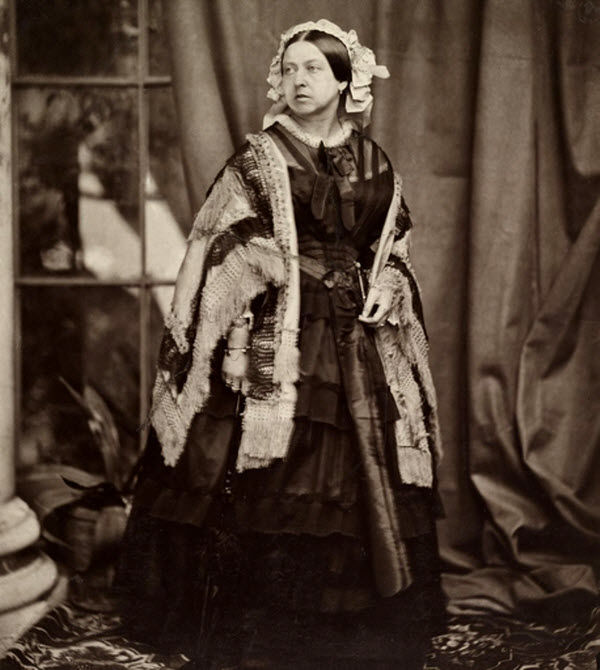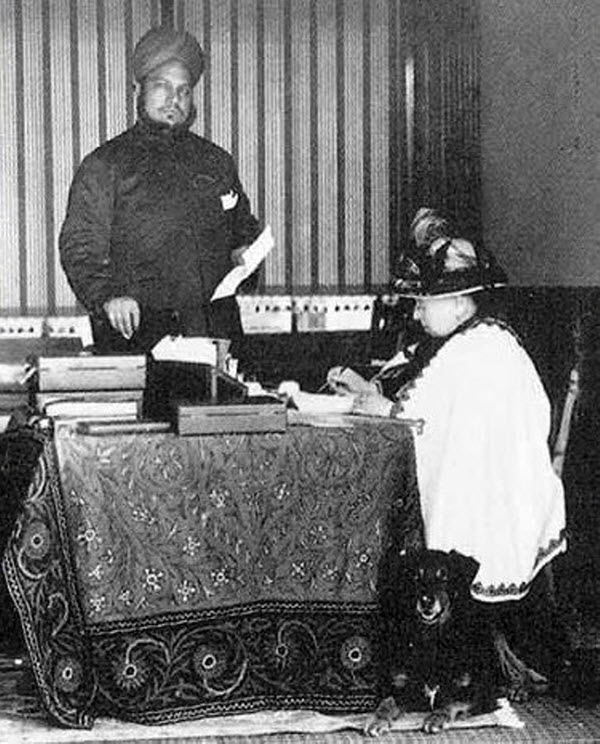Queen of the United Kingdom and its colonies for more than 60 years, Queen Victoria was the second longest-reigning British monarch in the country’s history after Queen Elizabeth II. She ascended the throne at the young age of 18, having been prepared for the role from an early age. Despite her youth, she successfully restored the reputation of the monarchy, which had been tarnished by the behavior and policies of her predecessors. She redefined the role of the royal family, reconnecting it with the public through numerous civil duties, including educational and social development efforts. Her reign saw significant cultural expansion, advancements in industry, science, and communication, and the construction of essential infrastructure such as railways and London’s underground tunnels. The Victorian era, as her reign is known, is often associated with Britain’s prosperity and global prominence. In terms of foreign policy, Victoria oversaw Britain’s territorial expansion, growing the British Empire into a vast global entity. Although she was uncomfortable with motherhood and disliked children, she became the mother of nine, with her era symbolizing the importance of idealized values of motherhood and family.

Her Early Life
Born Alexandrina Victoria on May 24, 1819, she was the only child of Prince Edward, Duke of Kent, the fourth son of King George III. Her mother was Princess Victoria of Saxe-Coburg-Saalfeld, the sister of Leopold, King of Belgium. Queen Victoria’s father died when she was only eight months old, leaving her mother to exert a controlling influence over her life. It is said that Victoria was a compassionate and energetic child. She received her education in the royal palace under the guidance of a governess and displayed a talent for painting and writing. She was also notably short, standing at just 1.5 meters, and in her later years, her weight increased, with her waist reportedly measuring 127 centimeters.
Ascension to the Throne
At birth, Victoria was fifth in the line of succession to the throne. However, after her father’s death in 1820, she became the heir presumptive because her surviving uncles, who were ahead of her in the line of succession, had no legitimate children. When King William IV died in June 1837, Victoria ascended to the throne at the age of 18. Upon taking the throne, her first Prime Minister, Lord Melbourne, played a crucial role in helping her navigate the complexities of monarchy and served as her political adviser for several years. During the early years of her reign, Britain was embroiled in wars in Afghanistan and China and faced domestic challenges from the working-class movement. Melbourne helped her manage these challenges, often working with an uncooperative Conservative government. It was Melbourne who suggested that Victoria allow her husband, Albert, to assume some state responsibilities.
Her Reign
Victoria’s reign, which lasted until her death, witnessed unprecedented industrial expansion, including the construction of railways, bridges, underground sewage systems, and power distribution networks across the empire. Her era was marked by a significant cultural shift, with scientific achievements such as Charles Darwin’s theory of evolution and technological advancements like the telegraph and the rise of the popular press. Major cities like Manchester, Leeds, and Birmingham experienced massive growth, and there was a surge in literacy, with widespread encouragement of reading and literature.

On the international front, Britain’s empire expanded dramatically, incorporating territories such as Canada, Australia, and India, along with colonies in Africa and the South Pacific. During Victoria’s reign, Britain became known as “the empire on which the sun never sets,” and she symbolized this vast empire. Despite constitutional limitations on her power, Victoria maintained some influence in foreign affairs. Britain saw few major wars during her reign, largely avoiding European entanglements, in part through the strategic marriages of her children to members of Europe’s royal families. Although the British constitution restricted her role in foreign affairs, her familial ties helped keep Britain out of European political intrigues.
During her reign, British politics underwent significant transitions, with the Conservative Party splitting and the formation of the Liberal Party. Victoria acted as a key mediator during these changes, helping facilitate the transition between incoming and outgoing Prime Ministers. Although she disliked Liberal Prime Minister William Gladstone, she found ways to work with him. In contrast, she was particularly fond of Conservative Prime Minister Benjamin Disraeli, who tied the monarchy to the expansion of the empire, helping to restore its popularity after her long period of mourning following the death of her husband, Albert.
Queen Victoria and Prince Albert
In 1840, Queen Victoria married her cousin, Prince Albert of Saxe-Coburg and Gotha. The couple had first met when she was 16 years old, with their marriage being encouraged by their uncle Leopold. After she became queen, Albert could not propose to her, so Victoria proposed to him on October 15, 1839. Initially, the British public was not welcoming of the German prince, and Albert was excluded from holding any formal political office. Despite a sometimes stormy marriage and a clash of strong wills, the couple was deeply devoted to one another, and Albert became Victoria’s strongest ally, helping her navigate the political waters. After several years of illness, Albert died of typhoid fever in 1861 at the age of 42, leaving Victoria devastated. She was so grief-stricken that she slept beside a plaster cast of his hand and entered a period of isolation that lasted 25 years, during which she dressed in black for the remainder of her life.
Queen Victoria’s Children
Queen Victoria and Prince Albert had nine children:
- Princess Victoria Adelaide Mary Louise (1840–1901), who married Frederick William, the future Emperor of Germany, in 1858. After his death just three months into his reign, their eldest son became Kaiser Wilhelm II.
- Prince Albert Edward (1841–1910), who succeeded Victoria as King Edward VII in 1901.
- Princess Alice Maud Mary (1843–1878), whose daughter Alexandra married Nicholas II, the last Tsar of Russia.
- Prince Alfred Ernest Albert (1844–1900), who married the daughter of Tsar Alexander II of Russia, and whose eldest daughter, Marie, became the Crown Princess of Romania.
- Princess Helena Augusta Victoria (1846–1923).
- Princess Louise Caroline Alberta (1848–1939), who caused a scandal by marrying a commoner, John Douglas Sutherland Campbell, who later became the Duke of Argyll.
- Prince Arthur William Patrick (1850–1942), who married Princess Louise Margaret of Prussia.
- Prince Leopold George Duncan (1853–1884).
- Princess Beatrice Mary Victoria (1857–1944).

Her Relationships and Close Bonds
Victoria had several close relationships, including with her Scottish servant John Brown, one of her closest companions. After Albert’s death, rumors circulated that Brown and Victoria were lovers, but she dismissed these claims, stating that Brown was seven years younger than her and merely her loyal friend. Brown was known within the royal family as “the queen’s stallion,” and he remained devoted to her until his death. When Brown died suddenly in March 1883, Victoria confided to Albert’s sister that Brown had “the most loyal and honest heart that ever beat.”

After Brown’s death, Victoria’s Indian servant Abdul Karim rose to prominence in her inner circle, becoming one of her closest confidants. Karim, the son of a hospital assistant in Northern India, was brought to England to serve at Victoria’s Golden Jubilee in 1887, where he quickly impressed her with his cooking. She asked him to teach her Urdu and showered him with gifts, including a carriage, titles, and honors. In her letters to Karim, Victoria referred to herself as “your loving mother” and “your closest friend.” Despite speculation, historians do not believe the two had a sexual relationship. Karim’s grandson, Javed Mahmood, told The Telegraph that their bond was akin to that of a mother and son, with Victoria becoming deeply attached to him.
Their relationship caused a scandal within the royal family, and after Victoria’s death, all her letters to Karim were destroyed. Her daughter Beatrice removed all references to Karim from Victoria’s diaries. While the family followed Victoria’s wishes to have Karim among the small group of mourners at her funeral, they later expelled him from the house Victoria had given him and sent him back to India. The relationship was only uncovered decades later by journalist Shrabani Basu, who visited Victoria’s summer home in 2003 and noticed several portraits and busts of Karim. Basu documented the relationship in her book, Victoria & Abdul: The True Story of the Queen’s Closest Confidant.

Her Death
Queen Victoria continued to perform her duties until her death, spending Christmas of 1900 at Osborne House on the Isle of Wight, in line with royal tradition. Her health quickly deteriorated to the point where she was unable to return to London, and she passed away on January 22, 1901, at the age of 81. At her bedside at the moment of her death were her son, the future King Edward VII, and her eldest grandson, Emperor Wilhelm II of Germany.
Excerpts from Queen Victoria’s Life
Queen Victoria had a half-sister, Princess Feodora, from her mother’s first marriage to Emich Carl, Prince of Leiningen. When Princess Feodora was six years old, her father passed away, and her mother married Queen Victoria’s father. The family then moved from Germany to England in preparation for the birth of the future queen.
Life in Britain during the 19th century became known as the Victorian era, named after Queen Victoria’s long reign and the mark she left on the country. Her strict morals and personality became synonymous with that time period.
Throughout her reign, Queen Victoria survived seven assassination attempts, spanning from 1840 to 1882.
